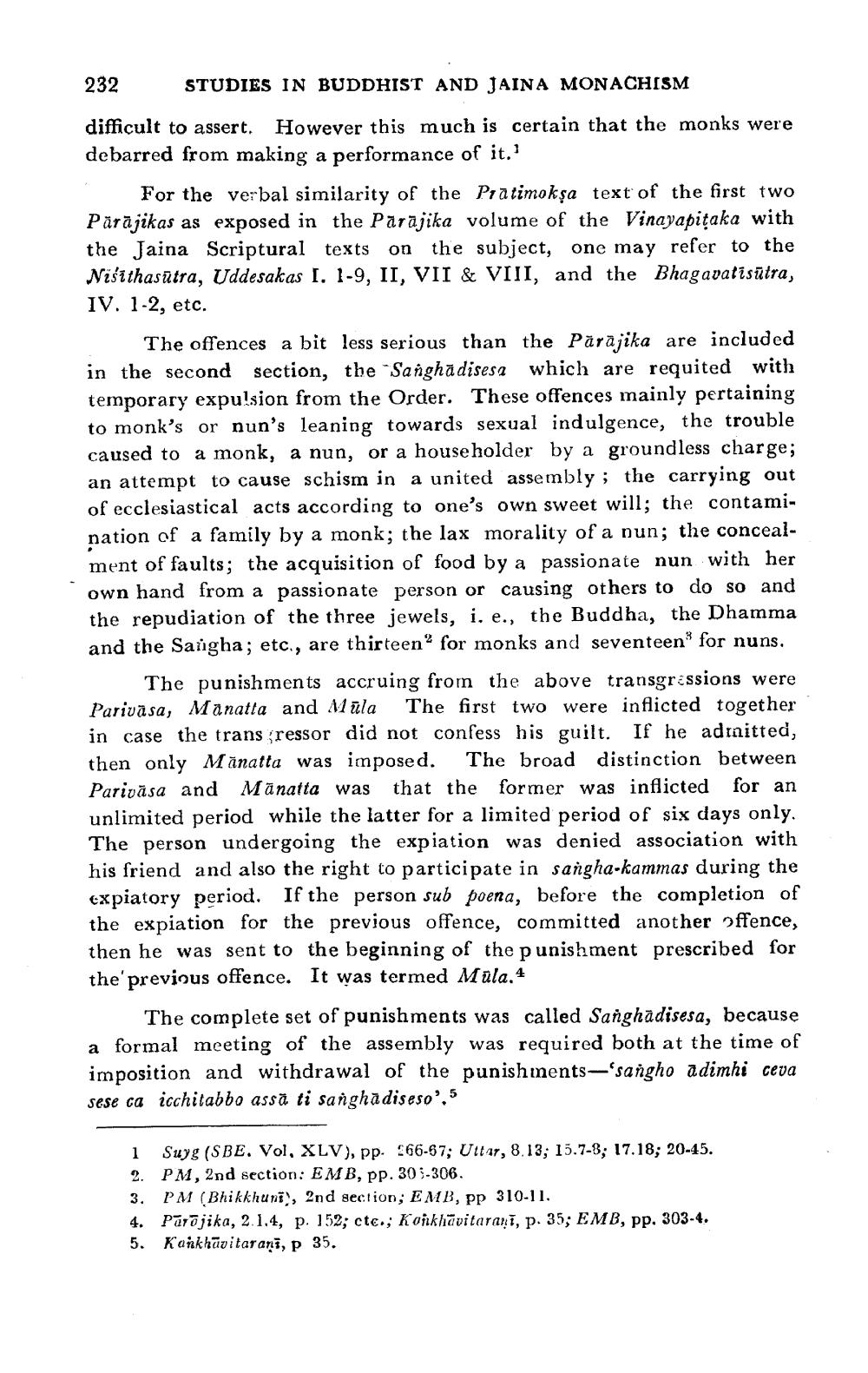________________
232
STUDIES IN BUDDHIST AND JAINA MONACHISM
difficult to assert. However this much is certain that the monks were debarred from making a performance of it.'
For the verbal similarity of the Pratimoksa text of the first two Pärājikas as exposed in the Parajika volume of the Vinayapitaka with the Jaina Scriptural texts on the subject, one may refer to the Niśithasūtra, Uddesakas I. 1-9, II, VII & VIII, and the Bhagavatīsūtra, IV. 1-2, etc.
The offences a bit less serious than the Päräjika are included in the second section, the Sanghădises which are requited with temporary expulsion from the Order. These offences mainly pertaining to monk's or nun's leaning towards sexual indulgence, the trouble caused to a monk, a nun, or a house holder by a groundless charge an attempt to cause schism in a united assembly; the carrying out of ecclesiastical acts according to one's own sweet will; the contamination of a family by a monk; the lax morality of a nun; the concealment of faults; the acquisition of food by a passionate nun with her own hand from a passionate person or causing others to do so and the repudiation of the three jewels, i. e., the Buddha, the Dhamma and the Sangha; etc., are thirteen" for monks and seventeen' for nuns.
The punishments accruing from the above transgressions were Parivāsa, Manatta and Mula The first two were inflicted together in case the trans ressor did not confess his guilt. If he adtnitted, then only Manatta was imposed. The broad distinction between Parivāsa and Manatta was that the former was inflicted for an unlimited period while the latter for a limited period of six days only. The person undergoing the expiation was denied association with his friend and also the right to participate in sangha-kammas during the expiatory period. If the person sub poena, before the completion of the expiation for the previous offence, committed another offence, then he was sent to the beginning of the punishment prescribed for the previous offence. It was termed Mala.4
The complete set of punishments was called Sanghadisesa, because a formal meeting of the assembly was required both at the time of imposition and withdrawal of the punishinents-sangho adimhi ceva sese ca icchitabbo asså ti sangha diseso'.5
i Suyg (SBE, Vol, XLV), pp. 66-57; Ultar, 8.13; 15.7-8; 17.18; 20-45. 2. PM, 2nd section: EMB, pp. 305-306. 3. PM (Bhikkhuni), 2nd section; EMB, pp 310-11. 4. Pārējika, 2.1.4, p. 152; cte.; Konkhävitarani, p. 35; EMB, pp. 303-4. 5. Kankhüvitar ani, p 35.




